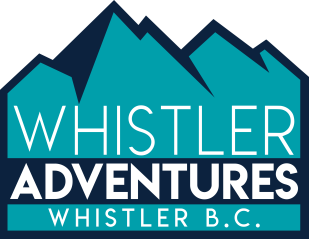Expect the Unexpected in the Wilds of Whistler
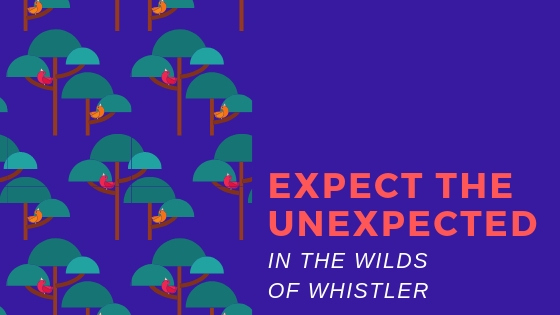
Whistler is located 120 kms north of the metropolis of Vancouver but you will feel worlds away in this ski town surrounded by some of the wildest nature in Canada. The Whistler Valley is swaddled between the glaciated Garibaldi Range of mountains to the east. We have the larger Pacific Range to the west and our local is dotted with crystal clear lakes and powerful rivers. It’s easy to feel small when standing next to thousand-year-old trees and daunting peaks.
Get out of the Village and into the wilds of Whistler – it’s not hard, simply step out onto one of Whistler’s many hiking and biking trails, take a bear tour in the backcountry. Or ride the gondola up to the top of the mountain.
Here you’ll be embraced by the beauty of nature and the tranquillity of the forests. Truly appreciate the opportunity to be away from it all while still within close proximity of your hotel.
What Makes Whistler So Wild?
The Squamish and Lil’wat First Nations have called Whistler and the surrounding area home for thousands of years, living off the land and thriving. It wasn’t until the late 1880’s when the first non-Indigineous settlers came to Whistler on foot and horseback – a trek that would take several days.
Luckily these days the trip to Whistler takes about an hour and a half from Vancouver along the world-class Sea to Sky Highway.
While a town of around 12,000 people has been built around it, Whistler still maintains an abundance of wild places where you can escape to and not see a soul. Wildlife still flourishes here and locals learn to coexist with the animals. From wetlands to the high alpine, Whistler is the perfect place for a number of species to call home.
Unexpected Adventures for Wildlife
Wildlife sightings should happen naturally – there’s no sign of a zoo anywhere in Whistler and there never will be! Wildlife, no matter where in the world, should be respected and given a wide berth so they can stay just that – wild.
Wildlife should never be fed human food or lured any closer to get the perfect Instagram shot, a longer camera lens will suffice. Stay safe and keep wildlife safe during these activities where a wildlife encounter is likely.
- Peak 2 Peak 360 Experience
Black bears love to graze on the lush grassy slopes of Whistler and Blackcomb Mountains and luckily, you can view from above as you travel on the Whistler Village Gondola or Blackcomb Gondola towards the top. Keep your eyes peeled for the large bruins that can vary in colour from black to a cinnamon brown. Despite how big they are, they’re easy to be mistaken for tree stumps and are easily camouflaged in the dark forests.
Deer can also be seen grazing along the slopes and often travel in groups, though they camouflage really well in the forest. While hiking the alpine trails on Whistler or Blackcomb, listen for the shrill squeak of a pika or the squeal of a marmot. Whiskey jacks love to chatter overhead in the alpine (hold on to your snacks!) while the eerie caw of the raven echoes through the valley.
https://www.youtube.com/watch?v=jBvaJ7dskBE
- Golfing
Black bears love to golf – the succulent golf course grasses, dandelions, and generally quiet surroundings make it the perfect spot for bears to hang out. Book a tee time at one of the three golf courses in town and you may well see one of the freeloaders of the golf course.
Do not let bear watching interrupt your play, or don’t even think about walking onto the course if you haven’t paid your green fee – leave these majestic beasts in peace. Some of the courses have viewpoints along the Valley Trail so if you’re walking or biking alongside it, you might get lucky but they do tend to retreat deep within the course.
- Fishing
During a fly fishing or walk and wade fishing trip you’re likely to be down by the river or lake in the early morning or at dusk – the perfect time to view wildlife. Bald eagles soar overhead looking for their next meal, songbirds chatter, and the fish start jumping as bugs whisk over the water’s surface. Along the shoreline, you might spot black bears or deer, and check the sand for paw prints.
- Whitewater Rafting
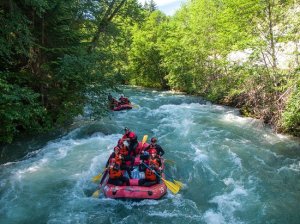
Whistler’s Green River is favourite run for locals.
The Elaho-Squamish River Rafting Trip is an eight-hour long trip that takes you so deep into the wilderness that most locals haven’t even trekked there. Float along the river for kilometres of thick, old growth forests which mountains and glaciers frame the river.
It’s here where you’ll see bald eagles, hawks, bears (grizzly or black bears), deer, and even mountain goats. It’s the ultimate adrenaline rush, sightseeing tour, and wildlife safari all in one!
- Helicopter Tour
Believe it or not, from up high in the sky on a helicopter tour you may be able to see animals as wild as they come. Mountain goats scaling the cliffs, black bears moseying about, and maybe even some bigger and more elusive creatures such as cougars and grizzly bears if you’re really lucky.
Helicopter tours take you into the backcountry in no time at all and pilots can navigate closer to the mountains and slopes to get a better and closer look at some of Whistler’s naturally magnificent features such as glaciers and peaks.
Most Common Animals You’ll See in Whistler
Whistler is home to many wild animals and while many are elusive, here are some animals in Whistler you just might see during your trip.
- Black Bears
There are approximately sixty black bears who call Whistler and Blackcomb Mountain home and spend the summer’s foraging on the mountains before taking to their dens to hibernate for the winter. Cubs can be seen in the spring as they emerge from the dens with their mothers and stay with her for about two years.
Black bears grow to be 200 to 600 pounds and five to six feet long. They are excellent at climbing trees and are opportunistic eaters – mostly munching on grass, roots, berries, and insects but will eat fish and mammals if available. Depending on snowfall, temperature, and food supply, bears get ready to hibernate in late November and emerge again in the spring.
Interested in learning more? A bear tour is a great way to learn more about bears from professional guides and get safely up close in a vehicle for postcard-worthy pictures.
- Whiskey Jacks
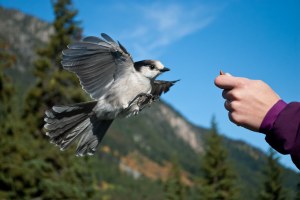
Whistler’s unofficial mountain top mascot, the Whiskey Jack
Whiskey Jacks, otherwise known as Grey Jays, are very frequently spotted year-round in the alpine. They’re notorious at the Harmony and Symphony ski lift lines hoping to snag a piece of someone’s granola bar or trail mix – but do resist as it does interfere with the ecosystem and can make the birds ill. Simply hold out your hand or ski pole and one might stop by for a brief moment.
- Hoary Marmots
They are Whistler’s namesake – the town is named after the shrill whistles heard throughout the alpine by these noisy, furry, creatures. The hoary marmot is a large, bulky, ground squirrel with short, heavy limbs and a broad head.
They’re often seen on summer hikes in the alpine sunning themselves on boulders but keeping a key eye out for danger. They blend in well to their surroundings and don’t move incredibly fast, but you’ll only be able to see them in summer as they hibernate in the winter.
- Pika
Another squeaky and super cute rodent often seen (and heard) in Whistler is the pika. They’re found in boulder fields in the mountains and in the valley and have a very distinguishable sound. They look like a mix between a rabbit and a hamster with a small fluffy body with short rounded ears. They spend the summers gathering food to eat during the winter as they do not hibernate. Often where you’ll see a marmot is where you’ll find pika as well!
- Beavers
One of Canada’s most iconic creatures can be found in Whistler swimming in the lakes and rivers and building dams along the waterways. You’ll often see them during a sunset paddleboard session on Alpha Lake or along the River of Golden Dreams. The beaver works as a keystone species in an ecosystem by creating wetlands that are used by other animals. Beavers do not hibernate and stay cozy in their beaver lodges throughout the winter before emerging again once the lakes and rivers melt again.
Helpful Advice on What To Do If You See a Bear In Whistler
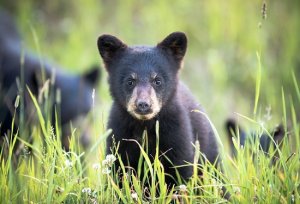
In spring, be prepared for little ones. In Fall, look for big-adults putting on winter weight.
You are most likely to run into a black bear instead of a grizzly bear when in Whistler. Grizzly bears can be identified as being brown in colour, they have a hump on their back, short round ears and visible claws.
They are more likely to be seen in the high alpine away from people whereas black bears have become more habituated and act more comfortable around humans.
Here is what to do if you see a black bear in Whistler:
- Travel in groups and make noise
- Respect its need for personal space and give it a wide berth. Consider turning around and going back the way you came.
- If the bear is in close contact, speak to it in a calm, appeasing tone and back away slowly. Walk, don’t run, and keep an eye on the bear to see how it reacts as it will likely flee.
- Never ever feed a bear and always store food safely away when camping in bear caches or in your car.
Whistler is filled with opportunities to see wildlife, especially in the summertime. Some of the best bear watching British Columbia can be done in Whistler on a bear tour where professional guides will teach you all about black bears and view them from the safety of a vehicle.
Walks in the alpine on Whistler and Blackcomb Mountains will get you in close contact with marmots and pika, and while floating on the river you’ll see beavers, birds, and amphibians. There’s no need for a zoo and you’ll see why during your visit to Whistler!
